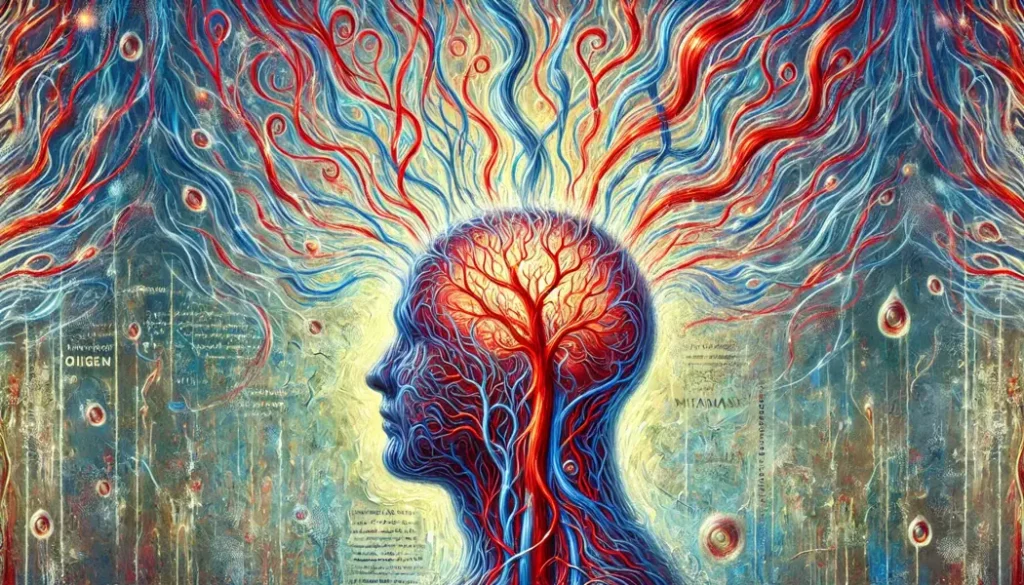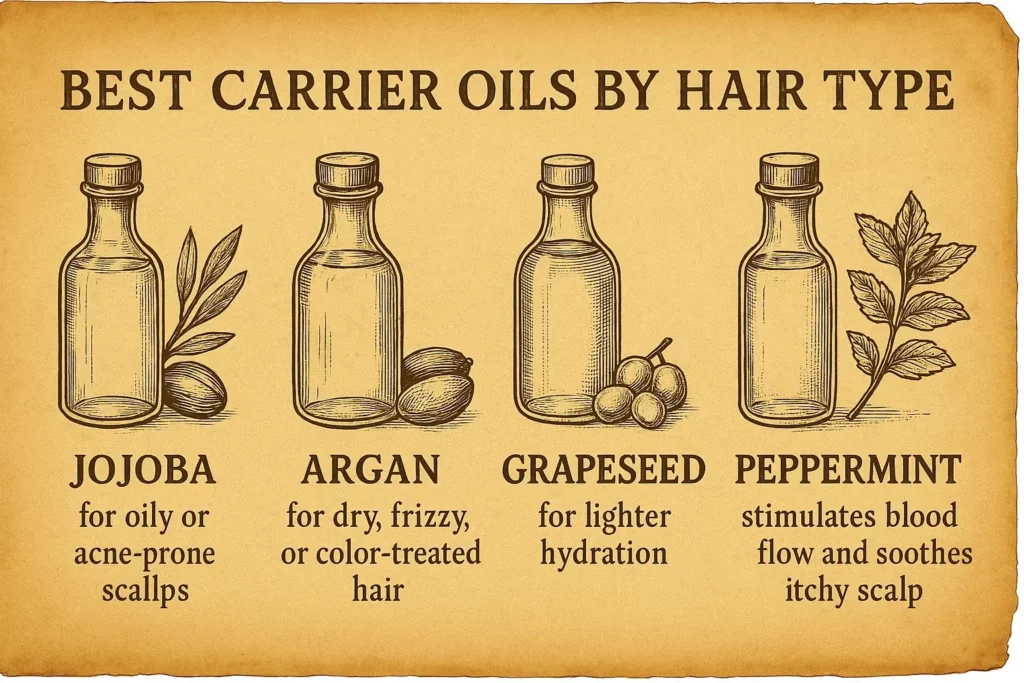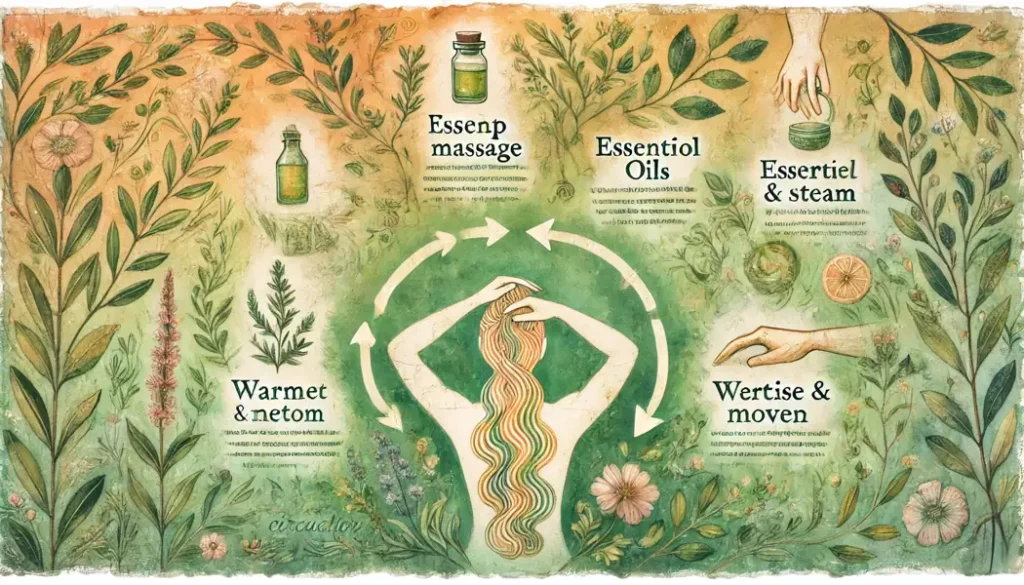💡 Why Scalp Circulation Matters More Than You Think
What if your hair isn’t thinning because of age, stress, or genes—but because your scalp is suffocating? Recent research shows that poor blood flow may be silently starving your follicles. Here’s how to fix it—starting today.
🩸 Scalp microcirculation is the delivery system that brings oxygen, vitamins, minerals, and hormonal signals straight to your hair roots. When it’s working well, your follicles thrive. But when circulation slows down, even the best hair care routine won’t make a difference—because your follicles simply aren’t getting what they need to grow strong, thick strands.

Hair growth isn’t just about products—it’s about biological support. And that starts with healthy blood flow.
🔬 Recent research in trichology (the study of hair and scalp) confirms that reduced scalp blood flow is a key factor in early-stage hair thinning—especially in individuals with a genetic predisposition. What’s often missed, however, is that this issue isn’t limited to those with “bad genes.” In fact, even people with zero family history of baldness can experience hair loss if their scalp’s circulation becomes compromised.
🧬 Why? Because follicles depend on constant nourishment—and if your microvascular system fails to deliver, your hair’s growth cycle gets disrupted. Instead of staying in the anagen (growth) phase, hair prematurely enters telogen (resting) and eventually falls out.
This means circulation isn’t just helpful—it’s foundational. You could be using premium products, taking the right supplements, and following all the advice—but if your blood isn’t reaching the root of the problem (literally), results will remain minimal.
🩸 How Poor Microcirculation Affects Hair Follicles
When your scalp’s microcirculation is compromised, the impact is subtle at first—but over time, it can be devastating for your hair. 🌪️
Hair follicles rely on a steady supply of nutrients and oxygen to stay active and productive. When that flow weakens, follicles can enter the telogen phase prematurely (resting state), reducing growth and increasing shedding. You may notice:
– Slower hair growth
– Thinner strands
– Hair that falls out more easily
– Loss of volume and vitality

🧠 According to the AAYNA Clinic, reduced scalp circulation impacts more than just hair density. It disrupts nutrient delivery, toxin removal, oxygenation, and even pH balance—key processes that keep follicles healthy and productive.
Without adequate blood supply, even the best shampoos or serums won’t make a difference. This is why improving circulation isn’t optional—it’s essential. ⚠️
What many people don’t realize is that poor scalp circulation can also interfere with the delivery of key hormones and immune signals to the follicle. That includes testosterone, DHT, and even cortisol—each of which plays a unique role in hair growth or loss. When circulation is sluggish, hormonal balance around the follicle becomes chaotic, leading to inflammation and dysfunction.
Even your body’s natural detox mechanisms rely on circulation. Without enough blood flow, cellular waste builds up, creating a toxic environment where follicles can’t thrive.
📌 Bottom line: when circulation breaks down, your hair doesn’t just slow down—it retreats.
🔍 Signs Your Scalp Might Be Starving for Blood
Most people wait until their hair visibly thins to take action. But by that point, the damage from poor circulation may already be well underway. The good news? Your scalp often gives you subtle warnings before the hair starts to go. 🕵️♂️
Here are the most common signs that your scalp may not be getting enough blood:
❄️ Cold or numb scalp
Blood flow brings warmth; without it, your scalp may feel unusually cool.
🤕 Tightness or tension
A scalp that feels stiff or “stuck” might be suffering from oxygen deficiency.
🔥 Itching without dandruff
Persistent itchiness can signal inflammation caused by poor circulation.
🐌 Slowed hair growth
If your hair takes forever to grow, your follicles may be underfed and sluggish.
🪞 Lifeless, dull hair
Lack of nutrients leads to strands that lose shine, strength, and bounce.
🧊 Cold extremities? Pay attention.
Poor scalp circulation is often part of a bigger pattern. If you frequently have cold hands or feet, it might point to weak peripheral blood flow—your follicles could be feeling it too.
These symptoms often go ignored, but they’re your body’s early warning system. Catching them in time can make a big difference.

🧬 Some experts also point to reduced capillary perfusion as a key indicator—meaning the smallest blood vessels aren’t delivering nutrients where they’re needed most. This often leads to “miniaturized” follicles that grow finer, weaker hairs with each cycle.
If you’ve ever noticed that your hairline starts to look “fuzzy” or your part seems wider, it may not be age or stress—it might be that your scalp is literally underfed.
📌 Early detection = better recovery. The sooner you act, the more likely you are to preserve density and prevent long-term loss.
🌿 Natural Ways to Improve Scalp Circulation
You don’t need a clinic or a lab coat to get your scalp blood flowing again. In fact, some of the most effective ways to improve scalp circulation are free, easy to implement, and rooted in both science and tradition. 🌱
Here’s what actually works:
1. Scalp Massage (With or Without Tools)
Gently massaging your scalp for 5–10 minutes daily helps dilate blood vessels and stimulate blood flow. Use your fingertips or try a handheld scalp massager for added benefit.

👉 Bonus tip: Massaging with essential oils enhances the effect (more on that below). For best results, combine it with breathing exercises to reduce cortisol—a double win for your scalp.
2. Essential Oils That Stimulate Circulation
– Rosemary oil: Proven to be as effective as minoxidil in some studies
– Peppermint oil: Creates a cooling sensation that encourages circulation
– Ginger oil: Stimulates warmth and movement in stagnant tissues 🔥
💡 Always dilute essential oils with a carrier oil (like jojoba or coconut oil) to avoid irritation. Apply 2–3 times weekly for best results.
3. Inversion Method
A simple but powerful circulation hack: flip your head upside down (or lie back with your head lower than your heart) for a few minutes per day. Some claim it boosts blood flow to the scalp—while results vary, it costs nothing to try.
4. Warmth and Steam
Heat causes blood vessels to expand. A warm shower, a steam room, or even a hot towel wrap around your scalp can gently boost microcirculation. Great as a pre-shampoo ritual, especially when paired with gentle massage.
5. Exercise and Movement
Don’t underestimate the power of motion. A brisk walk, light yoga, or head/neck stretches keep blood moving. Even five minutes of mobility per hour can benefit circulation—especially if you work at a desk. 🧘♂️

And while most people assume this applies only to men, the reality is more complex.
📢 Myth vs. Fact
🧠 Myth: Only men need to worry about scalp circulation.
✅ Fact: Women also experience thinning caused by poor blood flow—especially during hormonal shifts like pregnancy, postpartum, or menopause.
💧 And don’t forget the inside job: Proper hydration is crucial for maintaining healthy blood volume and nutrient transport.
👉 Read more in our full post: Hydration for Hair Growth – Why Water Matters More Than You Think
🔬 Science-Backed Treatments That Boost Blood Flow
If you’re ready to go beyond scalp massage and natural methods, science has your back. Several modern therapies are designed to stimulate hair regrowth by increasing blood flow directly at the follicular level—and they’re backed by real clinical data. 🔬
These treatments don’t just target the surface. They work at the cellular and vascular level, waking up dormant follicles and supporting healthier, thicker hair over time.
✅ 1. Low-Level Laser Therapy (LLLT)
This isn’t sci-fi—it’s real, FDA-cleared technology. LLLT devices (like laser caps or combs) stimulate mitochondrial activity in hair follicle cells, boosting ATP production and enhancing scalp vascularization.

📌 Clinical trials show measurable improvement in hair density and scalp circulation after consistent use for 3–6 months.
💡 For best results, combine with a topical formula (like caffeine or minoxidil) to enhance outcomes.
✅ 2. Microneedling (Derma Roller or Pen)
Microneedling creates micro-punctures in the scalp, triggering your body’s natural healing response. This releases growth factors, promotes angiogenesis (new capillary formation), and improves topical absorption.
🔗 Especially effective when paired with minoxidil or peptides that promote follicular regeneration.
🧪 Some studies suggest combining microneedling with LLLT can accelerate visible regrowth results.
✅ 3. Scalp-Activating Conditioners
Look for products containing vasodilator ingredients and antioxidants that support capillary health:
– Minoxidil: Relaxes blood vessels, improving follicular perfusion
– Caffeine: Enhances microcirculation and blocks DHT
– Niacinamide: Reinforces the scalp barrier and improves capillary stability
– Ginseng & Rutin: Promote blood vessel flexibility and combat inflammation 🌿
💡 Apply consistently (at least 4–5 times per week) for 8–12 weeks before judging results. Patience is key with vascular therapies.
✅ 4. Mesotherapy and PRP (for advanced cases)
In-clinic procedures like mesotherapy (injecting growth factors, peptides, and vitamins) and platelet-rich plasma (PRP) therapy use your body’s regenerative power to revitalize the scalp.
📌 These methods enhance angiogenesis and collagen production, especially helpful in chronic thinning or post-chemotherapy recovery.
⚠️ While they come at a higher cost, they may be the best option when conventional topical treatments have plateaued.
🧴 What to Avoid: Habits That Block Circulation
Improving blood flow is only half the battle—you also need to stop doing things that reduce scalp blood flow. Some of these habits are more common than you’d think, and they might be sabotaging your hair growth efforts without you even realizing it. 😬
Here’s what to avoid:
❌ Smoking
Nicotine narrows blood vessels and reduces oxygen in the bloodstream. The result? Weakened follicle function, inflammation, and slower hair growth.
📌 Even occasional smoking can impair scalp microcirculation and accelerate miniaturization of follicles.
👉 Read more in our post: How Smoking Affects Hair Health in Men
❌ Sedentary Lifestyle
Sitting for long periods—especially with poor posture—can reduce blood flow to the head, shoulders, and neck. This restricts nutrient delivery to the scalp and reduces follicle activity.
🪑 Incorporate short walks, posture breaks, or even just head rolls every hour to keep blood circulating.
❌ Wearing Tight Hats or Helmets
Tight headgear can compress the scalp’s microvascular system, limit oxygenation, and create localized thinning zones over time.
❌ Overuse of Dry Shampoo
Dry shampoo may absorb oil, but it also clogs pores, disrupts sebum flow, and suffocates the skin. Less oxygen + more buildup = slower growth.
⚠️ Use dry shampoo sparingly, and make sure to regularly cleanse the scalp with a gentle, pH-balanced formula.
❌ Chronic Stress
High cortisol levels constrict blood vessels, increase scalp inflammation, and disrupt hormonal balance—all of which can suppress healthy circulation. 🧠

💡 If you’re dealing with daily stress, consider supporting your system with anti-stress supplements or adaptogens to help your body cope more efficiently.
👉 Check out our guide on: The Stress-Hair Connection and How to Break It
🎯 Final Thoughts: Blood Flow = Hair Growth
Hair growth isn’t just about products or genetics—it’s about biological access. And that access depends on whether your hair follicles are getting enough oxygen, nutrients, and support through a healthy microcirculation network.
🩸 When blood flow is optimized, follicles wake up, energy levels rise, and the scalp becomes a fertile ground for growth. Without it, even the best hair care routine is like watering a garden with a sealed hose.
💡 The key is consistency. While results don’t happen overnight, building daily habits that support circulation will slowly but surely shift your hair’s long-term potential.
Here’s your 3-step action plan:
✅ Stimulate your scalp daily – through massage, heat, or light movement
✅ Support your system internally – with hydration, adaptogens, and circulation-boosting nutrients
✅ Eliminate barriers – like smoking, stress, and buildup that constrict blood flow
📌 Whether you’re just starting your hair regrowth journey or optimizing an existing routine, never underestimate the power of healthy microcirculation. It might not be the flashiest strategy—but it’s one of the most fundamental.
👉 Want to level up your results? Explore our curated guide:
Best Hair Growth Treatments for Men
Want healthier, stronger hair? Discover 8 science-backed habits that protect your scalp and boost natural growth. Get your free PDF guide today!

❓ FAQ: Frequently Asked Questions
🧠 Can poor scalp circulation cause permanent hair loss?
Not always—but it can contribute to it. Poor blood flow starves follicles of oxygen and nutrients, which may lead to thinning or dormant hair growth. If left unaddressed, it can speed up existing conditions like androgenetic alopecia.
⏳ How long does it take to improve scalp circulation?
With consistent effort—like massage, movement, and topical stimulation—you may notice changes within 4–8 weeks. Hair growth itself may take longer, depending on the health of your follicles.
🤲 Is scalp massage alone enough to boost circulation?
It helps, especially when combined with essential oils or used alongside devices like scalp massagers. But for lasting results, pair it with lifestyle changes, supplements, and possibly clinical treatments.
💊 Which supplements support healthy scalp circulation?
Look for ingredients like Ginkgo biloba, niacin (vitamin B3), omega-3 fatty acids, and magnesium. These support blood vessel health and nutrient delivery to the scalp.


Leave a Reply